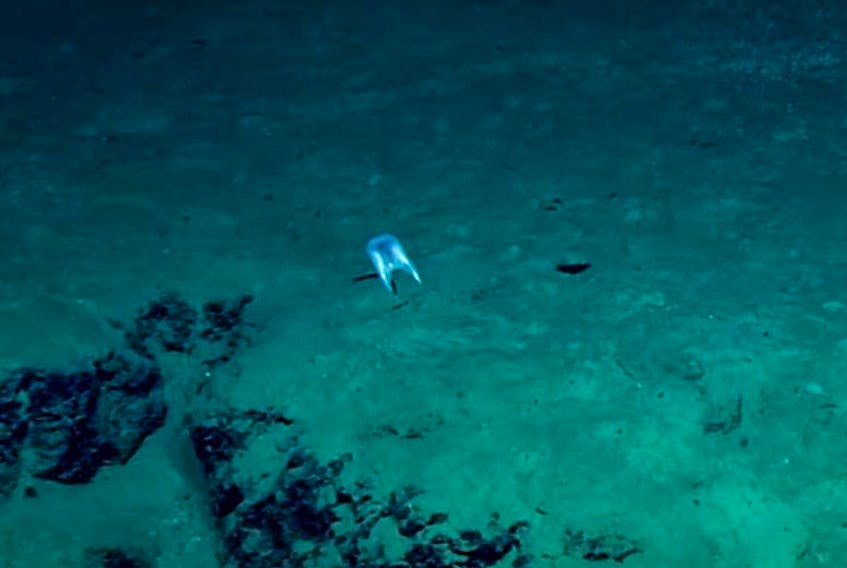Deep in the dark, murky waters of our oceans, a gelatinous blob, shaped like a dislodged human molar, floats along the seabed.
Thanks to its love for extreme depths and remote oceanic corners, no one had ever seen the blob, or even knew it existed, until a team of scientists accidentally discovered it during a deep-sea dive off the coast of Puerto Rico in 2015, with help from an underwater, remotely-operated vehicle called ‘Deep Discover.’
Five years on, in a paper published this month, scientists with the National Oceanic and Atmospheric Administration (NOAA) have confirmed that the blob is an entirely new species of undersea creature, Duobrachium sparksae – a never-before-seen species of jelly-like ctenophore. It’s also the first time that researchers have discovered a species using high-definition video footage only.
“It’s unique because we were able to describe a new species based entirely on high-definition video,” explained NOAA marine biologist Allen Collins in a release.
“We don’t have the same microscopes as we would in a lab, but the video can give us enough information to understand the morphology in detail, such as the location of their reproductive parts and other aspects.”
Ctenophores, also known as comb jellies, have bulbous, balloon-like bodies, from which protrude two tentacle-like strings, known as cilia. There are between 100 and 150 species of comb jellies, according to the NOAA, and despite their name, they are not at all related to jellyfish. Ctenophores, the group explains, are carnivorous, and many are highly efficient predators that eat small arthropods and many kinds of larvae.
Three different specimens were filmed by the vehicle at depths around 3,900 metres, in an underwater area called the Arecibo Amphitheater, which lies within a trench known as the Guajataca Canyon, off Puerto Rico. One of the animals appeared to use its tentacles to touch the seabed, scientists said.
“It was a beautiful and unique organism,” oceanographer Mike Ford was quoted as saying in a release.
“It moved like a hot air balloon attached to the seafloor on two lines, maintaining a specific altitude above the seafloor. Whether it’s attached to the seabed, we’re not sure. We did not observe direct attachment during the dive, but it seems like the organism touches the seafloor.”
Identifying a new species solely via photographic and video evidence has often yielded contentious results, the scientists explained in their paper, as natural classification “relies heavily” on the physical specimen samples preserved in museums “to serve as references to which other material can be compared.”
“Indeed, the idea of using photographic evidence to establish new species has been highly contentious in recent decades.”
In this case, however, the team was able to avoid any pushback due to the high-definition quality of the footage they recorded of the three observed specimens. The team hopes to collect real-life specimens on future dives, but fears it may be decades before they run into the species again.
“Even if we had the equipment, there would have been very little time to process the animal because gelatinous animals don’t preserve very well,” Collins said.
“Ctenophores are even worse than jellyfish in this regard.”
Copyright Postmedia Network Inc., 2020









